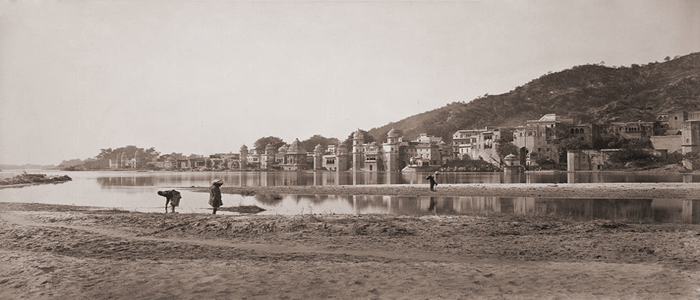According to Hindu mythology, Haridwar is old as time and it is one of the seven most sacred pilgrimage spots in the country. Located in Uttarakhand in North India, Haridwar has a population of over 300000 made up of Hindus, Muslims, Sikhs, Buddhists, Jains and Christians living harmoniously in the gateway to the holiest places in the State.

The Gateway to Lord Vishnu is at the foothills of the Shivalik mountains in the Himalayas and the holy river Ganga flows through the thriving city. Bathing here frees you from the eternal cycle of life and death besides washing away sins. Haridwar is of religious and historical significance, holding a unique place in the hearts of Hindus since times immemorial.
History
If one goes by Hindu mythology, Haridwar dates back to the time when Brahma was creating the world. The gods and demons churned the ocean for the pot of nectar and while Garuda was carrying the pot, a few drops fell at this spot, making it a place for eternal salvation. Haridwar is unique in that Lord Vishnu, also known as Hari, left his foot print here and the name “Har” in Haridwar is also indicative of Lord Shiva known as Har Har Mahadev.
The city thrived around 1200 to 1700 BC as shown by the terra cota findings at this spot. It is even more ancient, finding mention in the Mahabharata where the sage Dhaumya extolled the virtues of this spot to Yudhisthira of the Panch Pandavas. Sage Kapila had an ashram here as did Agastya Muni.
The Mauryans ruled in Haridwar from 322 to 185 BC. The Kushans then took over around the 1st and 2nd century AD. King Harshvardhan ruled here during 590 to 647 AD.
Around 1336 AD Timur Lang or Timur the Lane from Central Asia overran the city.
Guru Nanak, the first Sikh Guru and founder of the religion, bathed at the Kushwan Ghat when he set out on a pilgrimage.
What is present day Haridwar probably owes its existence to Maharaja Man Singh of Amber in Rajasthan who laid the foundations and renovated the ghats, especially Har Ki Pauri.
When Haridwar came under Mughal rule, it was known as Mayapur and the Emperor Akbar is said to have imbibed the waters of the Ganga river and paid tribute to the Maharaja at this spot. He is also credited with establishment of copper coin mint at this spot.
The British arrived in the 1800s and left their footprints in the shape of the the Bhimgoda Dam built cica 1840 AD and the Municipality of Haridwar was officially created around 1868 around which time a railway line was also laid.
After independence and with the growth of pilgrims to Char dham in Uttarakhand, Haridwar gained in importance as the entrée point to these pilgrimage sites.
If the city is of importance to bhakts of Vishnu and Shiva, it is also an equally important Shaktipeeth since the Maya Devi Temple is the site where the navel of Goddess Sati fell while Shiva was transporting her body. The current temple dates back to the 11th century and may have been built on a possibly more ancient temple.
Historical Significance
- The past has an influence on the future and this is especially true for Haridwar, a city steeped in spirituality and Hindu legends of the past.
- Garuda, while flying past the city on his way to the Himalayas, let fall a few drops of nectar from the pot on this spot and ever since then, Haridwar became one of the seven sacred pilgrimage spots and one of the four places where the Kumbh (pot) mela is held.
- Bhagirath brought down the Ganga from the heavens to the Earth and people bathe in the holy waters to cleanse themselves of sins and free themselves from the cycle of life and death.
- Interestingly, during the samudra manthan, Dhanvantari (considered father of Indian ayurveda) emerged from the ocean holding the pot of nectar said to bestow immortality. Haridwar today still continues to be a centre of ayurveda.
- The Chinese traveler Huan Tsang visited in 629 AD and was impressed enough to mention it in his travelogues as Mo Yu Lo.
- The ancient Sages also served to inspire the city to lead in education and the Gurukul Kangri University, set up in 1902 by Swami Shraddhananda promotes the gurukul system of studies. The city also has a college to promote Sanskrit studies as well as ayurvedic college.





Leave a Reply